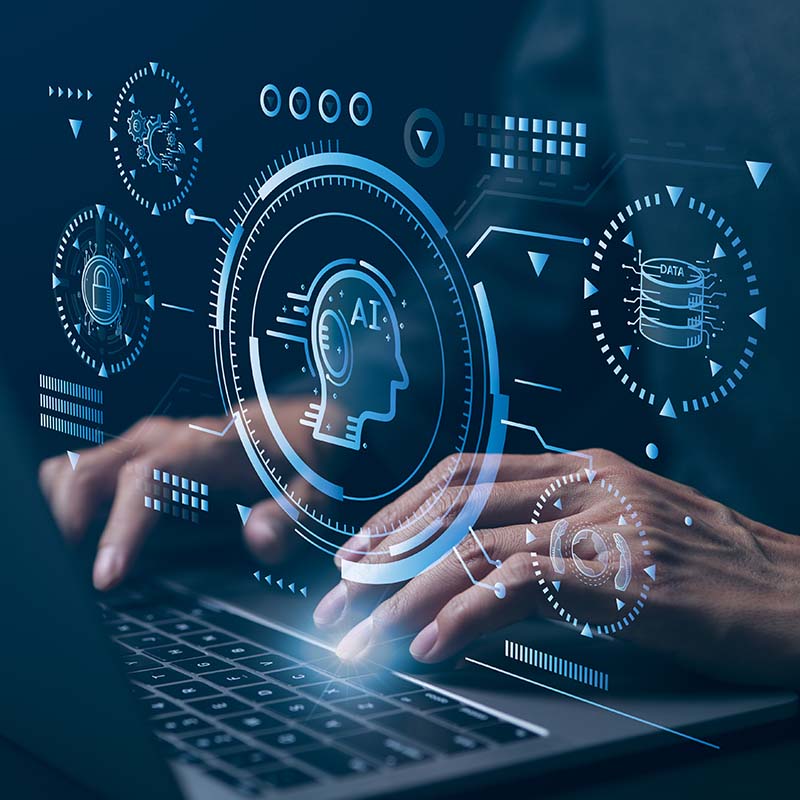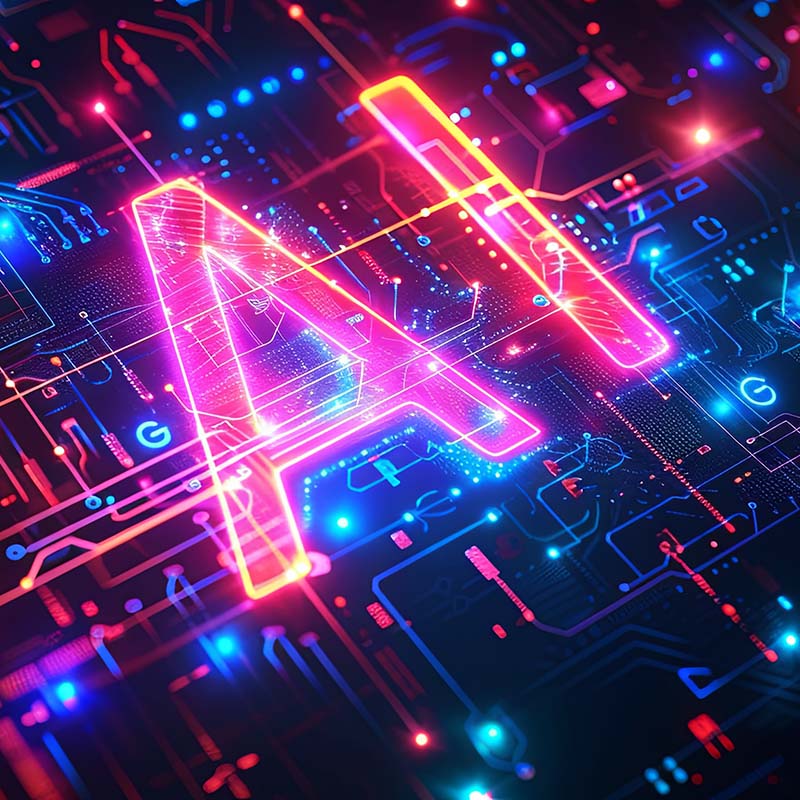歴史家はいつか、 2023 年を人工知能(AI)の転換点と表現するかもしれません。ライドシェアリング・アプリ、検索エンジン、ソーシャルメディア・フィード、さらには Netflix のレコメンデーションなど、消費者は何年も前から AI や機械学習の恩恵を受けてきましたが、今年 ChatGPT が登場し、その他の生成 AI ツールがリリースされたことで、日常生活の様々な場面でコンピューティングが果たす役割に新たな可能性が生まれました。
ビジネスの戦略家や意思決定者は、生成 AI や 機械学習を使ってプロセスや生産性を改善し、新しいサービスを提供する方法を模索しています。これらの自動化された機能をうまく業務に統合した企業は、ビッグデータを変革的なビジネス成果に変える能力を継続的に向上させることができると、多くの人が考えています。
チャレンジはチャンスと同じくらい素晴らしいものだ。
Organizations must acquire or upskill the talent then grow their knowledge and IT infrastructure that are needed to support these new digital capabilities. Without that, it’s impossible to collect, store and manage the troves of training data that are required to produce actionable results from modern machine learning models, according to international computer science expert Dr. Douglas Comer, a distinguished professor of computer science at Purdue University.
Comer talked to The Forecast about findings in his 2021 book, The Cloud Computing Book: The Future of Computing Explained.
Machine Learning Provides a Competitive Advantage
Thanks to the rise of AI-based technology — including large language models, translation software and voice recognition, just to name a few — machine learning will soon be as fundamental to business as word processing, internet browsing and mobile apps. For enterprise leaders, however, AI isn’t just a way to be more efficient. Because AI-generated analyses can improve the decision-making process, it’s also a way to be more effective, according to Comer.
“Think of a CFO of a company: They have to make all sorts of important decisions and plan for the company’s financial future,” he told The Forecast in an exclusive interview.
“They have to know about things like bank rates for loans. If it’s a multinational corporation, they might have to know about exchange rates or what’s going on in other countries. They have to know about stock prices and dividends so they can deliver a fact-based recommendation to the CEO.”
Clearly, a lot rides on the decisions of CFOs. With the help of AI and machine learning, they and other C-level executives can make better choices, faster. This ultimately creates a competitive advantage, according to Comer. He said AI can produce real-time insights that human analysts might miss and can do it in a fraction of the time.
Why Cloud Computing is Critical
Comer is author of the seminal computer science series, Internetworking with TCP/IP; a former member of the Internet Architecture Board; a fellow of the Association for Computing Machinery; and an inductee to the Internet Hall of Fame. He believes AI doesn’t just represent the future of business. It also represents the future of computing. He sees the widespread adoption of machine learning will have profound consequences for cloud computing, in particular, by dramatically increasing demand for remote data storage.
“Machine learning is based on statistics, which means scientific computation,” Comer said.
Large-scale scientific computation requires intensive computing power and large volumes of training data.
“That spells cloud computing,” he said.
“Cloud data centers have lots of processing power and you can get as much as you want to pay for.”
He expects the demand for cloud computing to continue rising as companies lean on data-heavy technologies like machine learning and artificial intelligence.
Edge Computing Fuels Machine Learning
Despite the clear benefits, there are drawbacks associated with using cloud data centers to store and process machine learning datasets.
“We all know that in lots of industries, faster decisions give a competitive advantage,” Comer said.
“Financial companies that do stock trading will tell you that a millisecond can offer advantages. And we’re not talking dollars. It’s millions of dollars in a very high-stakes environment.”
For organizations that value low latency in machine learning, as well as local control over data, there’s a solution that can supplement traditional cloud data centers: edge computing.
“Edge computing means you build multiple small data centers near the sources of data,” Comer said. “Then there’s another idea called fog, which means you have intermediate data centers.”
Collectively, cloud data centers, intermediate fog computing and edge computing form a hierarchy where the lowest form of analysis is performed on-site with immediate results. Data is then aggregated and sent up the hierarchy for additional, more intensive analysis and for training and refining models.
“Additional — especially in aggregate — analysis can be completed in the fog data centers, with results sent to the cloud for the repository and ultimate computation for the overall company,” Comer explained.
While he believes adoption will accelerate over the next decade, Comer makes it clear that edge computing will never replace traditional cloud data centers.
“If we can process data simply and quickly put it at the edge, great,” he said. “But if we need to have real intensive long-term computation, and we need to keep large amounts of data, that’s not going to fit in an edge data center.”
Edge Computing and Cybersecurity
Given the risks that digital businesses face, one can’t discuss the future of computing without also discussing cybersecurity.
Again, edge computing has distinct advantages and disadvantages, according to Comer.
“If you can do processing in the edge center and, in particular, if you can do encryption in the edge center, then all of the data moving upstream to the cloud … is encrypted,” he said.
By encrypting data before it leaves the edge computing facility, organizations can prevent sensitive data from being intercepted in transit.
This type of approach is especially attractive to organizations that handle data in highly regulated industries like health care, financial services and critical infrastructure sectors, where data breaches come with stiff penalties.
And yet, edge computing is not a cybersecurity cure-all.
“More edge data centers actually increase the attack surface,” Comer said. “[Because] these are physical locations, someone might be able to break in … These facilities could be sitting out in the middle of nowhere, are automated, with nobody around to see you.”
Edge data centers must therefore be physically secured to prevent unauthorized access.
Moving from Cutting Costs to Generating Value
Along with increased speed and security, there’s another reason to embrace edge computing: cost.
But that’s the wrong reason, said Comer. He worries that cost-conscious leaders might declare, “We can use slower processors that are much cheaper. We can also use less data, which is much cheaper.” This approach might work for some things, but it could impact speed and reliability.
Looking at edge computing as a way to replace cloud data centers and save money is a mistake. The real value in edge computing is not cost savings, but the ability to generate more accurate AI results more quickly by using a larger volume of data on-site — a critical advantage for executives who use these insights to guide high-stakes decision-making.
“[Edge computing is] not going to ever overtake cloud data centers, because there are lots of things that you can’t do in an edge data center,” Comer concluded. “But it is going to be a supplement because you can do things in an edge data center that you can’t do in the cloud … It’s all about latency.”
Marcus Taylor has worked as an executive ghostwriter and content strategist for the information technology industry since 2016, specializing in digital transformation, cybersecurity and quantum computing. He is reachable through his website, mtwriting.com.
© 2023 Nutanix, Inc. All rights reserved. For additional legal information, please go here.












